Affiliate links on Android Authority may earn us a commission. Learn more.
What is the LG dual screen case? Here's everything you need to know
December 11, 2020
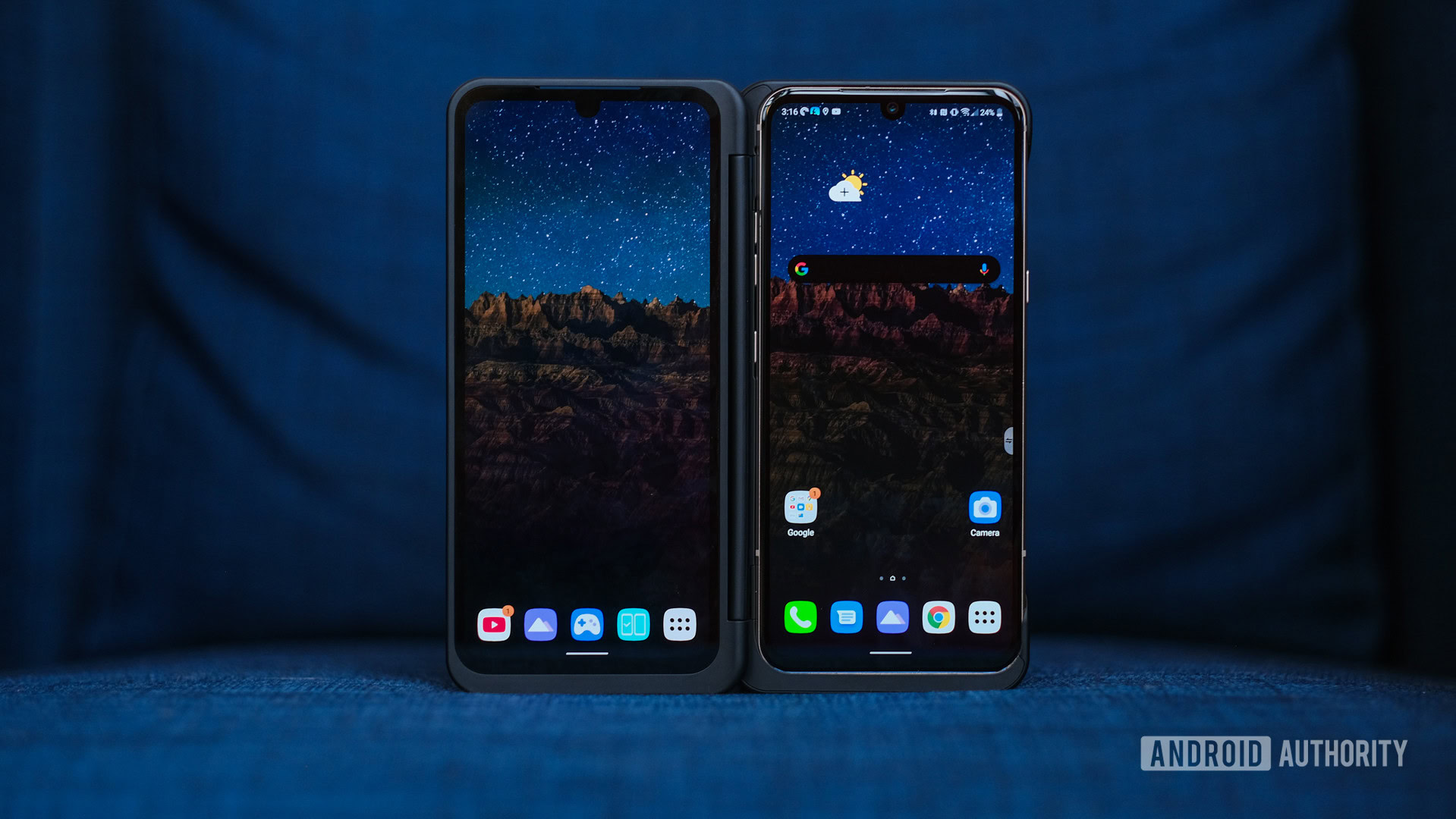
The LG dual screen case gives you the ability to extend you smartphone experience across two screens. However, you can remove the phone from the case and use it solo if you want and the case doesn’t require a flexible, but fragile display experience. You can do quite a bit with this neat little accessory. Let’s take a deeper look at the LG dual screen case.
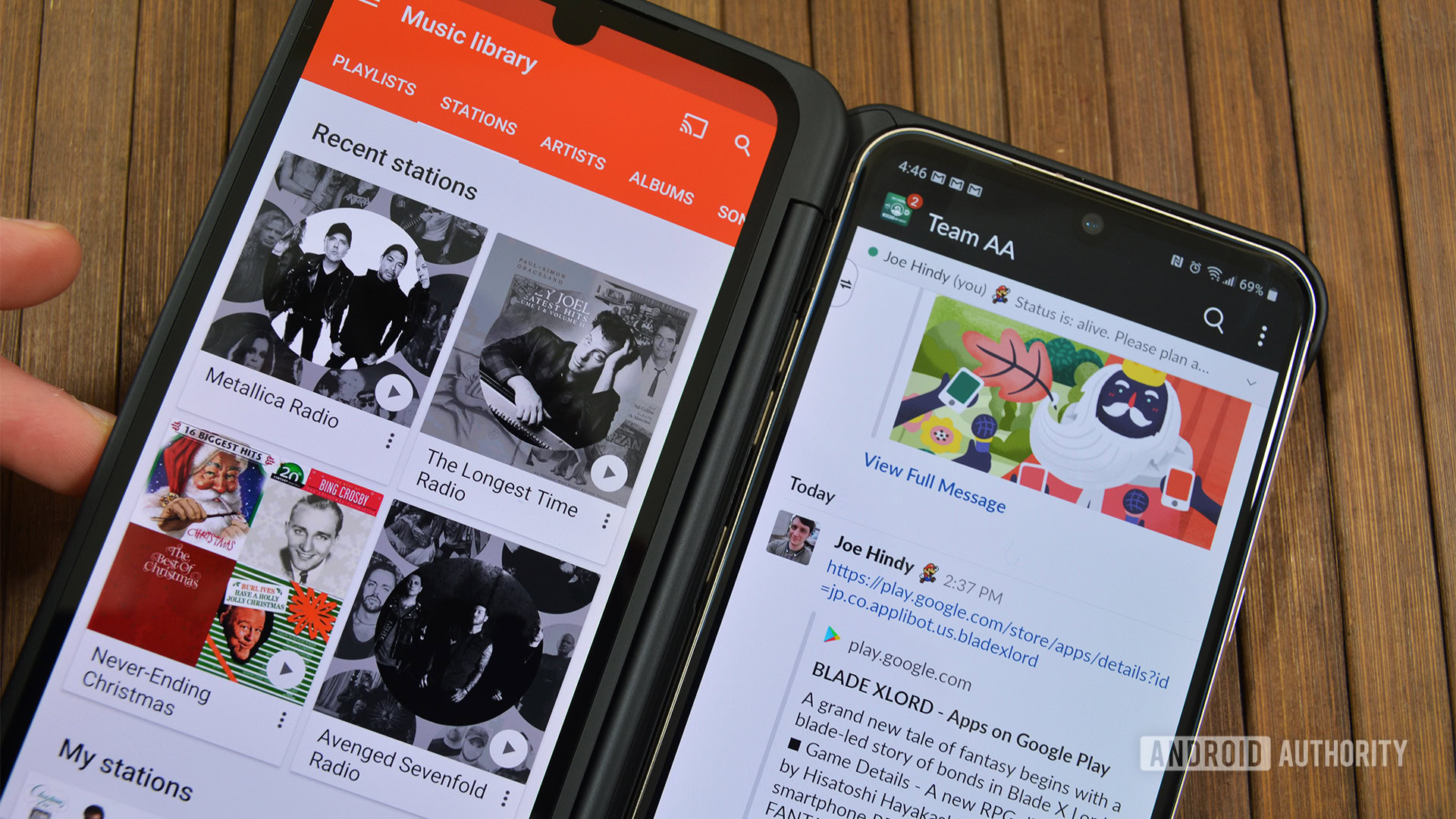
What is the LG dual screen case?
The dual screen case is an accessory for the LG V50 (sold separately), LG G8x, and the LG V60. It resembles a folio case with a front cover that folds closed over the device. However, the LG dual screen case is much thicker than most folio cases and houses an entire second screen. You can use both screens in tandem right next to each other. The front of the case also includes a small informational screen with the time, date, battery life, and some notifications.
It’s a lot more limited than something you’d see with a Galaxy Fold or similar device. The biggest perk with the case, though, is how optional it is. If you want to run your device without the dual case, simply pop the phone out of the case and use it solo.
LG's dual screen case is something unique in the mobile phone space. It's optional, gives you an extra screen to play with, and costs vastly less than foldable phones.
The case connects to the phone via an integrated USB-C adapter in the case and the phone runs the second screen much like a dual monitor on computers. You put the phone into the case by sliding it down onto the USB-C plug and then pushing the top of the phone to seat it into place. From there, the dual screen turns on and you can use it and configure it. The case itself holds its position so you can view it flat, at a 90-degree angle, or however you want. While the case is on the phone, you must use a separate charging adapter to charge your device.

Where to get the LG dual screen case
The case is only available for the LG G8x, LG V50, and the LG V60 currently. Generally, the case comes with the phone when you buy it. Each phone has its own case and they are not compatible with one another. It is a little difficult to get a hold of just the case on its own, especially for the G8x and the V60, which usually come with it in the box.
You can still get it as a stand-alone product if your phone didn’t come with it, though. The LG G8x case is available directly from LG for $199.99. LG V50 owners have to use eBay to score a used case. The LG V60 comes with the case wherever its available but you can still buy just the case on eBay as well. You can buy replacement charging adapters here as well if you need them.
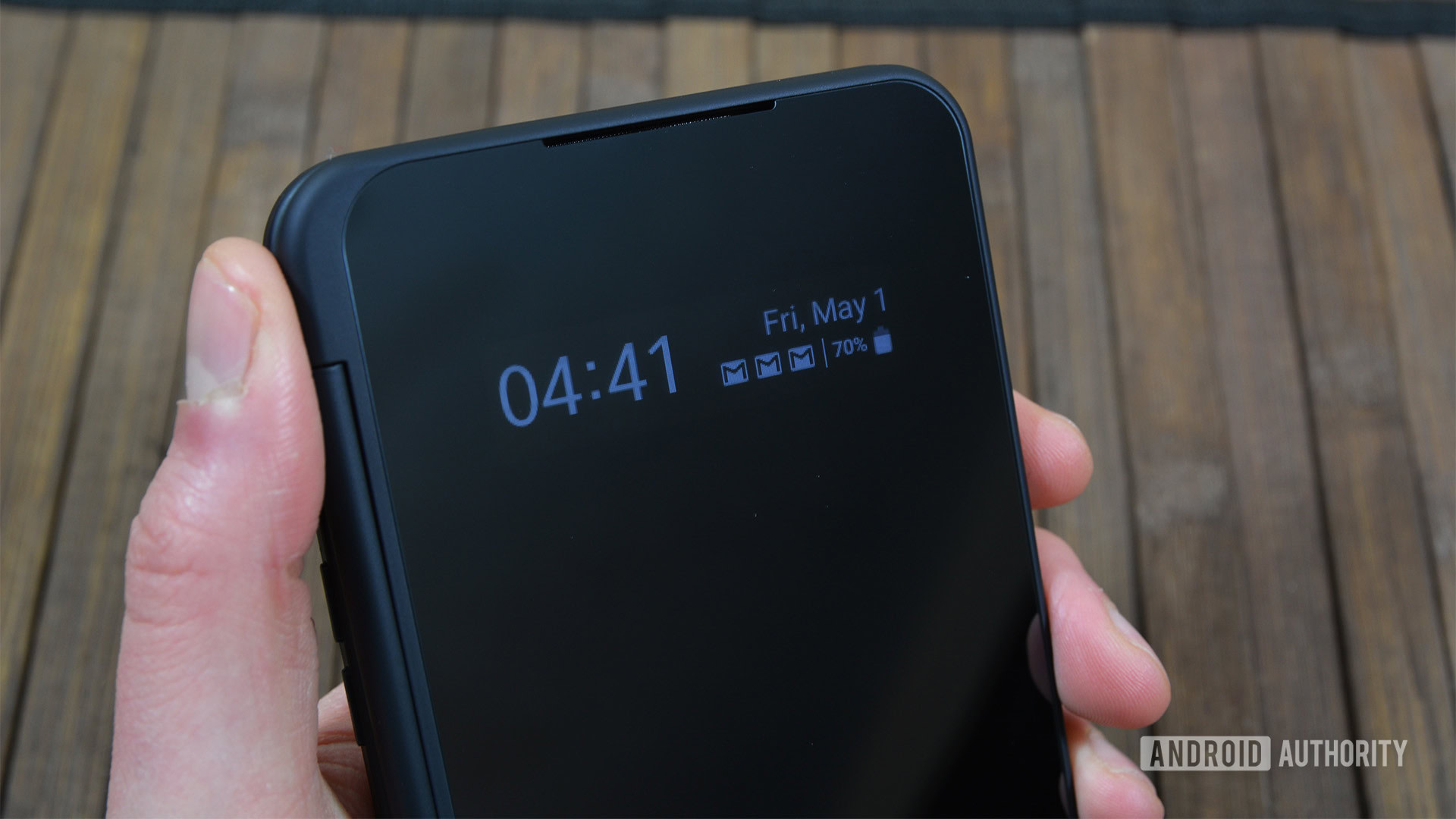
The basics
The dual screen case has a very similar set-up as Samsung’s S-Pen. there is a floating menu with a bunch of basic commands that do various things. You can easily perform the basic functions with this little floating menu button and do a sizable number of things with it. There are more commands on the second screen itself. Between the two, you can do almost anything you need to do.
Let’s go through each command:
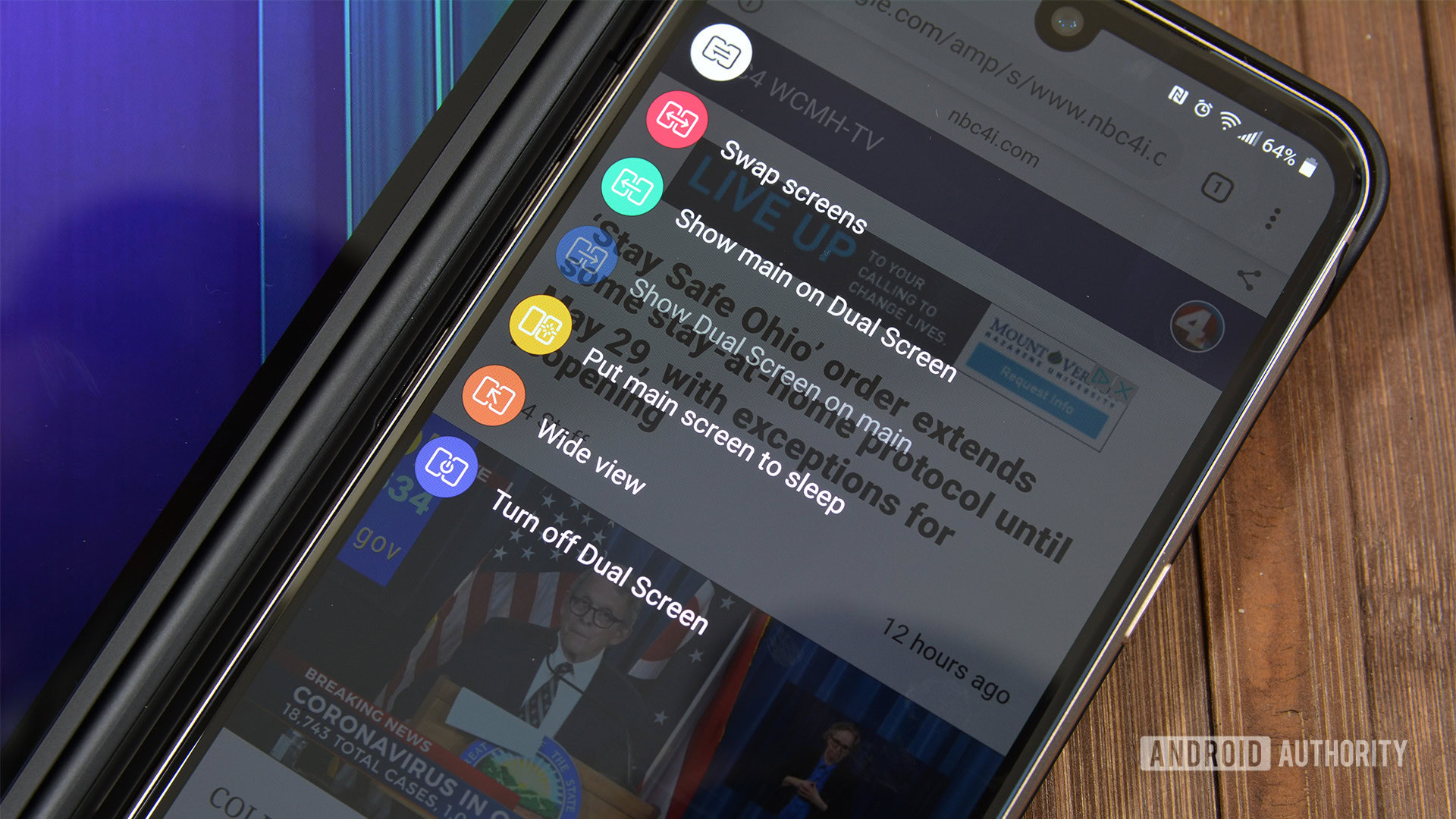
Floating button on main screen
- Swap screens – This switches the content on the left and right screen. For instance, if app 1 is open on the left screen and app 2 on the right, it’ll move app 1 to the right screen and app 2 to the left screen. This also switches a single app to the opposite screen if you only have one open.
- Show main on Dual Screen – This switches the app on the main screen (the V60’s actual screen) to the dual screen.
- Show Dual Screen on main – This command is basically the inverse of the previous one. It sends an app from the dual screen back to the main screen.
- Put main screen to sleep – A self-explanatory command. It lowers the brightness of the main display to zero and blocks any inputs. It doesn’t turn the screen all the way off, though.
- Wide view – Wide view only shows up when a compatible app is open on the main screen. It stretches the app to fit both screens as though it were a single tablet display. It only works with a handful of apps.
- Turn off Dual Screen – Another self-explanatory action. It simply turns the dual screen off. However, unlike the main screen sleep function, the second display turns all the way off and becomes entirely inactive.
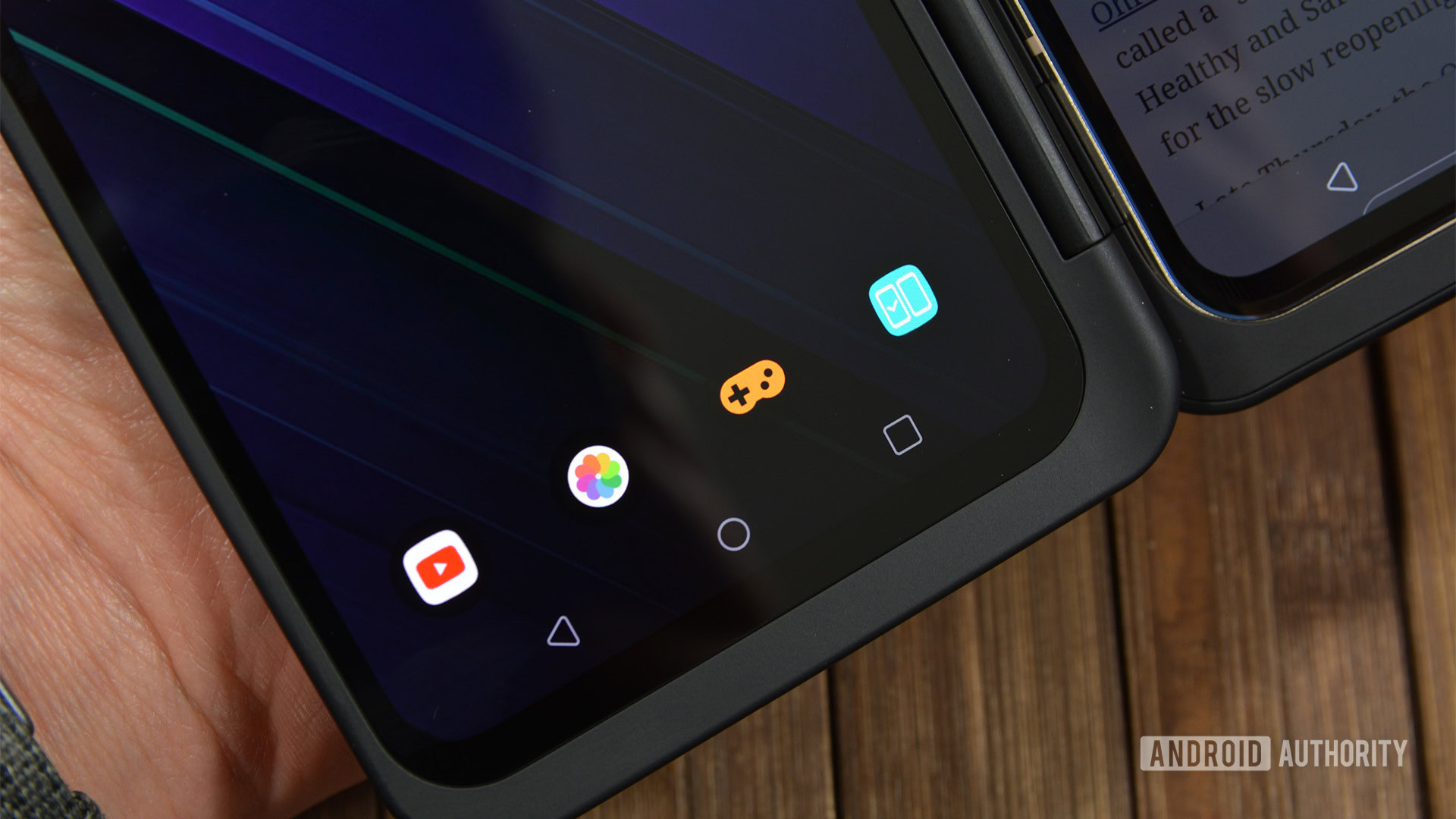
Second screen controls
The second screen has its own set of controls. They provide an entirely different set of functionality.
- Game controller icon – The purple game controller icon is a shortcut to LG’s Game Launcher. It shows all of your installed games. Along the bottom of the Game Launcher, you can find shortcuts that may be handy for gamers, including the ability to mute media, disable alerts, search for installed games, a quick link to the YouTube Gaming channel, and a shortcut to open LG’s Game Pad.
- Dual screen icon – This rests by the purple controller icon by default. It’s a quick shortcut to your dual screen settings menu where you can configure various features and functions.
The second screen has its own pull-down menu that is entirely separate from your standard notification shade. Pulling down the second screen shade gives you some more control options.
- Screenshot – Take a screenshot of only the content on the second screen.
- Dual Screen – This quick command turns the dual screen off similar to the Turn off Dual Screen button on the main screen.
- Brightness slider – The brightness slider on the dual screen controls specifically the dual screen. There is also a sync button to sync it to the brightness of the main display. We recommend just leaving it synced unless you need it at a different brightness for some reason.
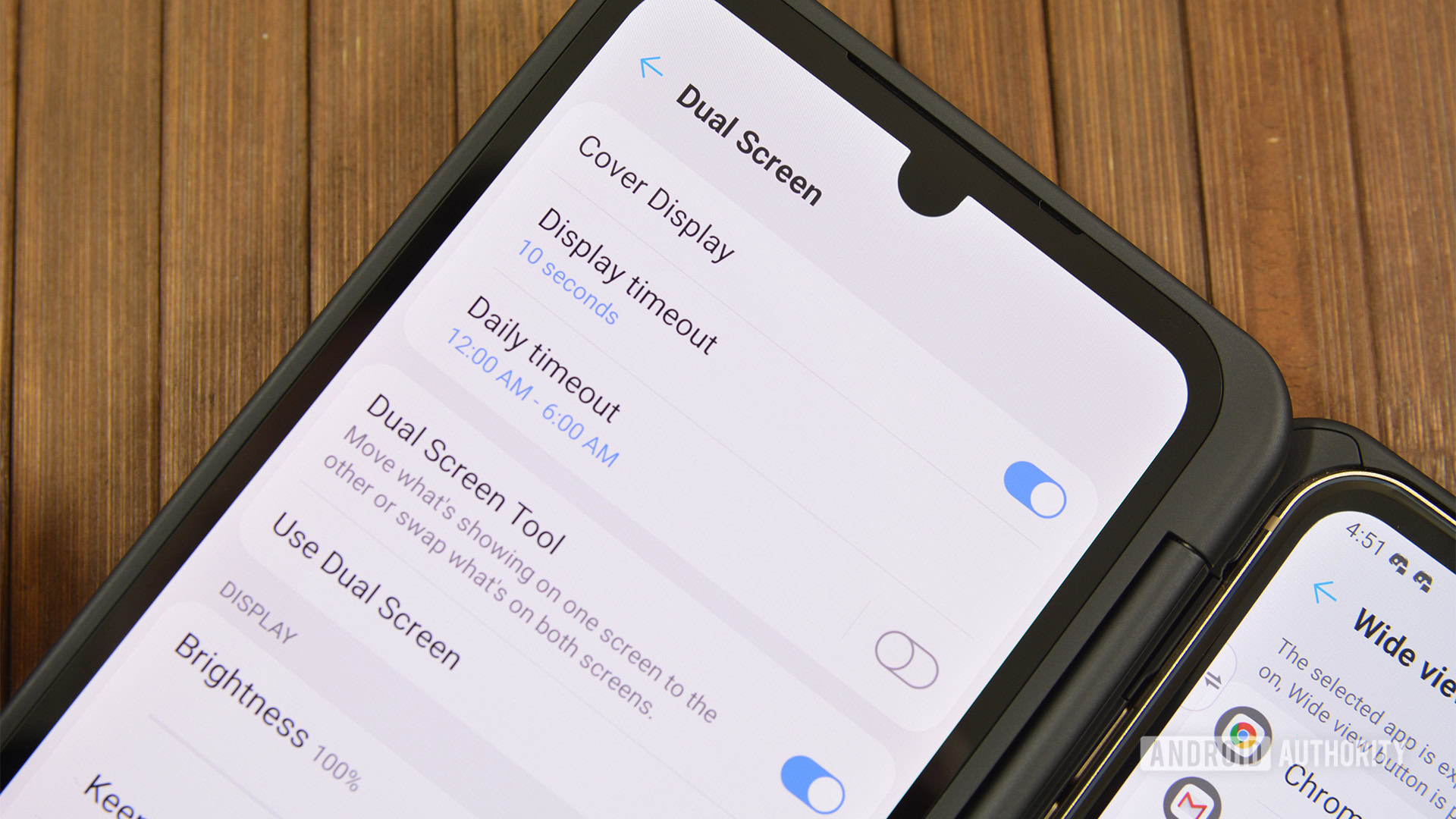
Dual screen settings
The dual screen settings are accessible with the dual screen icon on the second display or in your phone’s Settings menu under the Display option. You can configure the dual screen case in a number of ways here.
- Cover Display – Toggle this on or off to enable or disable the small front display. You can also configure the display timeout delay and schedule parts of the day where it never turns on.
- Dual Screen Tool – This toggle enables or disables the floating icon menu on your home screen while using the dual display. We only recommend this if you know all of the gestures by heart.
- Use Dual Screen – Toggle this to turn the dual display on and off, just like the Turn off Dual Screen function above.
- Brightness – Use this to configure the LG dual screen case brightness. There is also an option to leave it the same as the main display. This is identical in functionality with the brightness slider on the dual screen drop down menu.
- Wide view – Configure the wide view option here. It basically just consists of toggling apps to function with it. At the time of this writing, it’s only a handful of Google apps. Enable or disable them as you please.
- Wallpaper – Change the wallpaper on your second screen with this option. You can also long press on the dual screen’s home screen to change the wallpaper on just that screen.
- App drawer icon – Add an app drawer icon to the second screen launcher if you want to. You can still access the launcher by swiping up on the home screen on the dual display like most Android phones.
- My Pick App – This neat little tool lets you automatically launch a selected app as soon as the dual screen turns on. Tap the option and select an app. It should open every time the dual screen turns on.
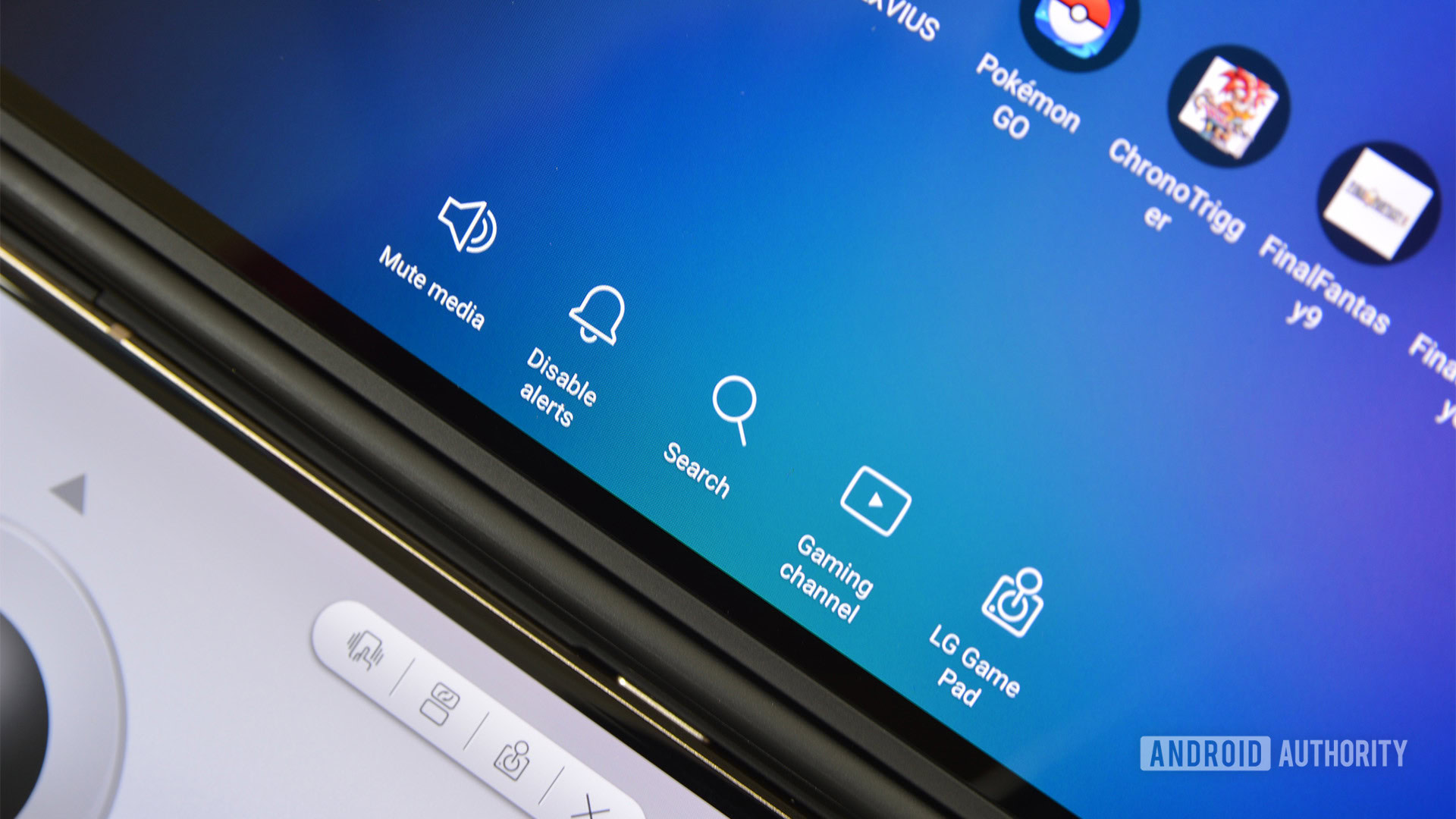
Advanced maneuvers
LG added a whole bunch of neat little extras. In fact, there are enough to where you can actually turn the floating menu off and replicate most of those commands with simple gestures. We’ll show you how to do all of that.
Gestures and extra functions
- Three finger swipe – Use a three finger swipe (three fingers on the screen at once) to fling apps from one screen to the other. It works on both sides of the screen.
- Answer phone calls with the case closed – Simply hit the Google Assistant hardware button on the left side of the phone to answer a phone call with the case entirely closed. Fun fact, the case actually has a hole where the earpiece is specifically for this functionality. Simply hit the Assistant button again to end the call.
- Mirror mode – Open the camera app with the dual screen case open and you’ll find an icon in the top left that looks like the dual screen. Click it and it starts mirror mode. Both screens will now show what the selfie camera sees. It’s not overly useful but it’s fun.
- Double tap to wake – LG is the pioneer of the double tap to wake functionality and it works perfectly fine on the second display. Double tap the second screen to turn it off and then double tap again to turn it back on without requiring the floating menu.
- Grab screenshot from keyboard – This nifty trick is similar to mirror mode. On the LG keyboard, there is a dual screen icon with a camera bracket around it. Tap that while typing out a message to immediately take a screenshot and embed that screenshot into the message you’re typing all with one button press.
- Use three apps at once – Android’s native dual screen mode works with the dual screen mode attached. Thus, you can have one full screen app on the dual screen and two half-screen apps on the main display for a total of three apps running at once. The only other type of phone that can handle that are foldables like the Galaxy Fold.
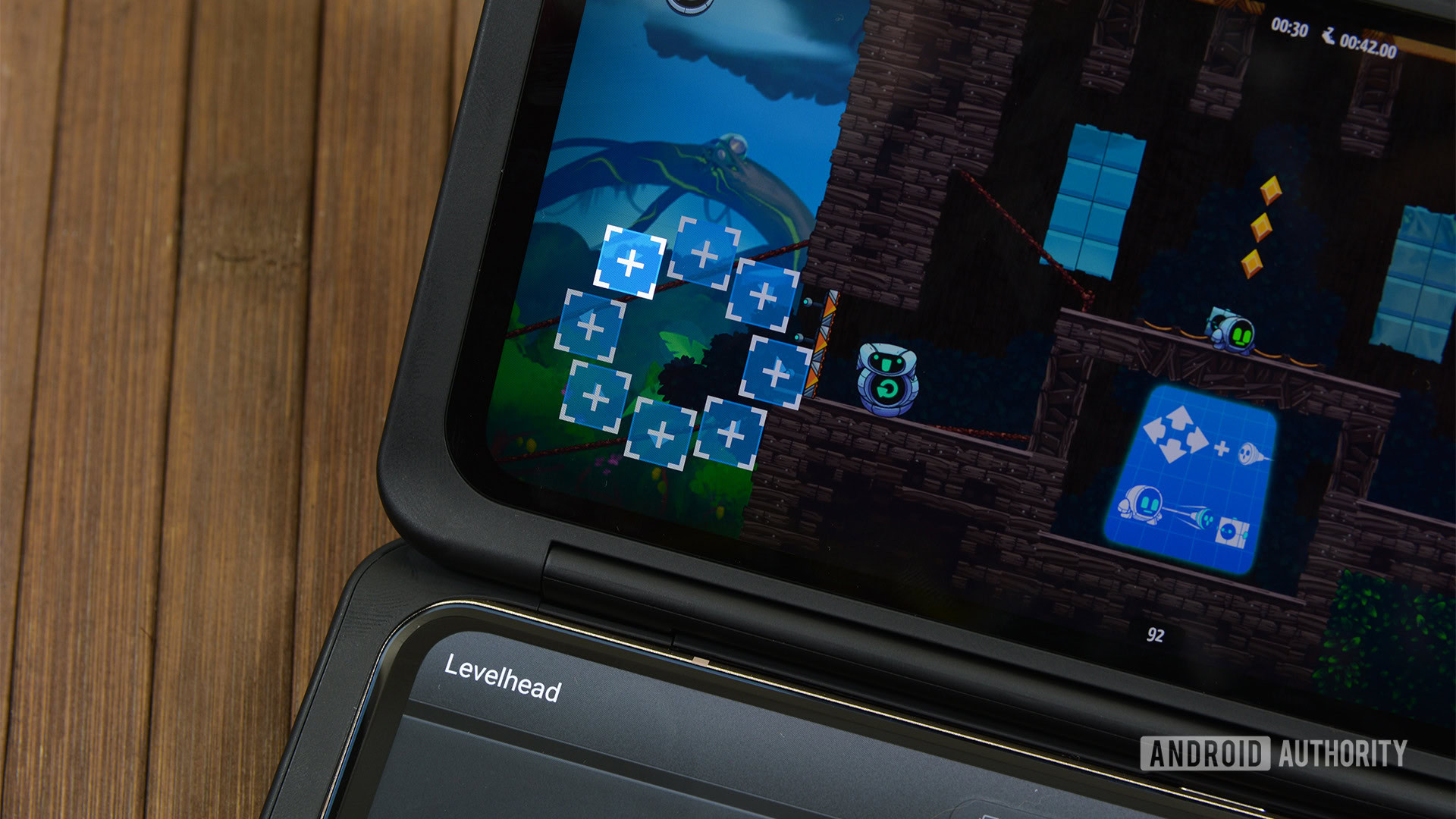
Gaming
One of LG’s biggest tricks is a software keyboard you can map to video games like a hardware controller. It works by mirroring the touch on the LG Game Pad with the screen above you. Thus, many games without hardware controller support still work and you can map hardware controller support to existing controller games if you want to. Let’s quickly go over how to do that.
Open the LG Game Pad
- The easiest way is to open the Game Launcher on the second screen. At the bottom, there’s an icon for the LG Game Pad. Click it and then open whatever game you want to play.
- Get into the game and make sure the stock LG Game Pad skin doesn’t just natively work. Many hardware controller supported games will just work with one of the pre-made controllers and you won’t have to do anything.
- On the LG Game Pad, there is an icon that looks like two windows stacked on top of each other with arrows. Use that to flip the top screen 180-degrees if the game loads upside down.
Create your own game pad
If it’s not working out of the box, you can create and physically map the buttons yourself. It’s a bit of a tedious process, but it actually works for most games.
- Tap the joystick icon in the LG Game Pad to load the controller selection screen.
- Flick all the way to the right and tap the plus symbol on the blank slate when you see it.
- Important – Make sure the game you want to map the buttons to is open and an active game is happening. This may be difficult in online PvP games, but you need to be able to see the screen where you actually control stuff.
- Once in game, click the edit icon in the top right corner of the LG Game Pad screen to open up the game pad editor.
- Use the + symbol to add buttons to the controller. Add as many buttons as necessary to have a button for every action and command. There are individual d-pad buttons as well as joysticks as needed.
- You can resize buttons using pinch-to-zoom gestures. Make each button and joystick as big as you want.
- Do not save your changes yet and keep reading. You’re only halfway done.
Now comes the tricky part. As you add buttons, you may notice a line of blue boxes with white plus symbols on the actual game screen. LG mirrors the touch inputs from the game pad to those blue boxes. Thus, the only thing left is to put those blue boxes in the proper spots.
- Tap one of the joysticks or buttons you put on the controller. You’ll notice the corresponding blue box lights up on the top screen where the game is. Tap and drag that blue box to the part of the game’s UI you want to map to.
- Repeat the above process for each button and joystick. You may need to adjust a few times after the initial set up. Stay patient and you’ll get it.
Between the built-in game pads and the ones you can make yourself, nearly all mobile games are now usable with off-screen controls. Plus, the game doesn’t register you as using a hardware controller. This may be advantageous in some games, although it’s not the most ethical move.
We tested the LG Game Pad with ePSXe (which natively worked) and Levelhead (which required manual configuration). An example of a couple of games this gamepad won’t work with include Clash of Clans and any points-and-click adventure game where you must click elements all over the screen.
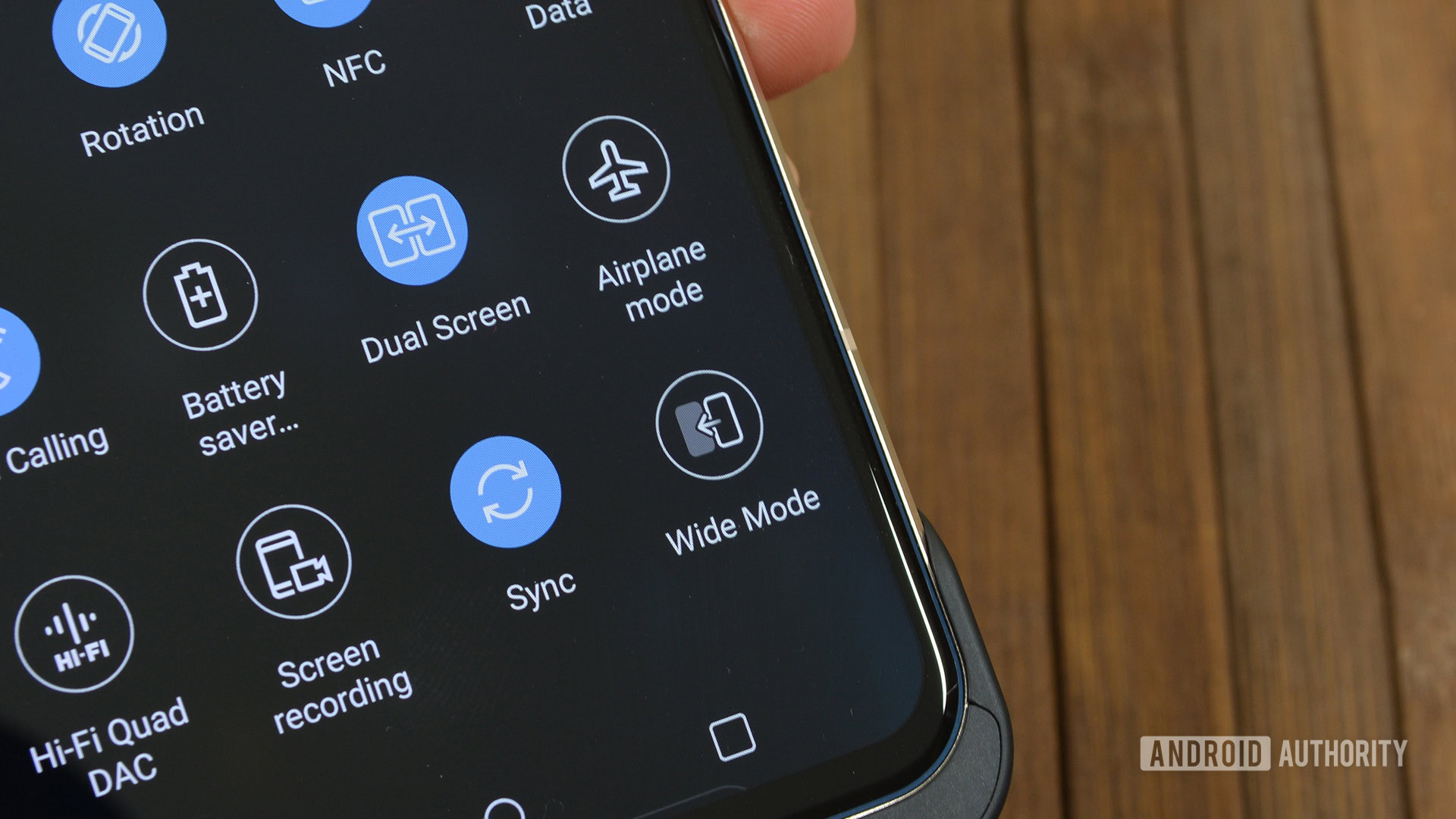
Tips and tricks
Now that we’ve got the functions down, you can use them to maximize your experience in a variety of ways. Most of the stuff above is already fairly power user heavy and there aren’t a ton of hidden options that we haven’t found.
Perhaps the first and best piece of advice is how useful this case is even without the second screen on. The front screen is excellent for quick time and battery checks without turning the whole phone on. Additionally, the case hinge is more than strong enough to support the phone in various positions such as a tent mode or a kickstand mode.
However, if you’re looking for some extra tips and tricks, here you go!
- Escape some limitations – You can only use the LG keyboard for the screenshot grab feature and the landscape mode typing feature. This isn’t great if you use third party keyboards. You can get around the limitation by using the keyboard icon that appears in the softkey bar at the bottom to quickly change between keyboards if you want to use that functionality and use the same icon to switch back later.
- Second screen customization – The second screen is surprisingly customizable. You can add apps and games to the screen and customize it like an extra home screen. It keeps its own wallpaper and you can even add widgets if you want to. The phone remembers your settings and makes the home screen look like that every time.
- Wide view mode is best in landscape – Most of the tutorials show it in portrait mode where it, frankly, looks horrible. However, every app with wide view compatibility is visible in landscape and that’s the best way to use it.
- Use the WideMode for LG app – WideMode for LG is a third party app that forces wide view for most apps and even some games. It’s a bit hit or miss, but definitely works for most popular apps like Facebook, Twitter, and similar apps. You can download it here from Google Play. It works as a quick settings toggle. After installation, edit your quick settings and add the WideView toggle. From there, open an app on the main screen, pop open your quick settings, and hit the WideView toggle to force wide view mode.
We’ll expand this section as we learn more about the dual screen. If we missed anything, tell us about it in the comments along with a description of how to do it and we’ll add it to the list!
Thank you for being part of our community. Read our Comment Policy before posting.